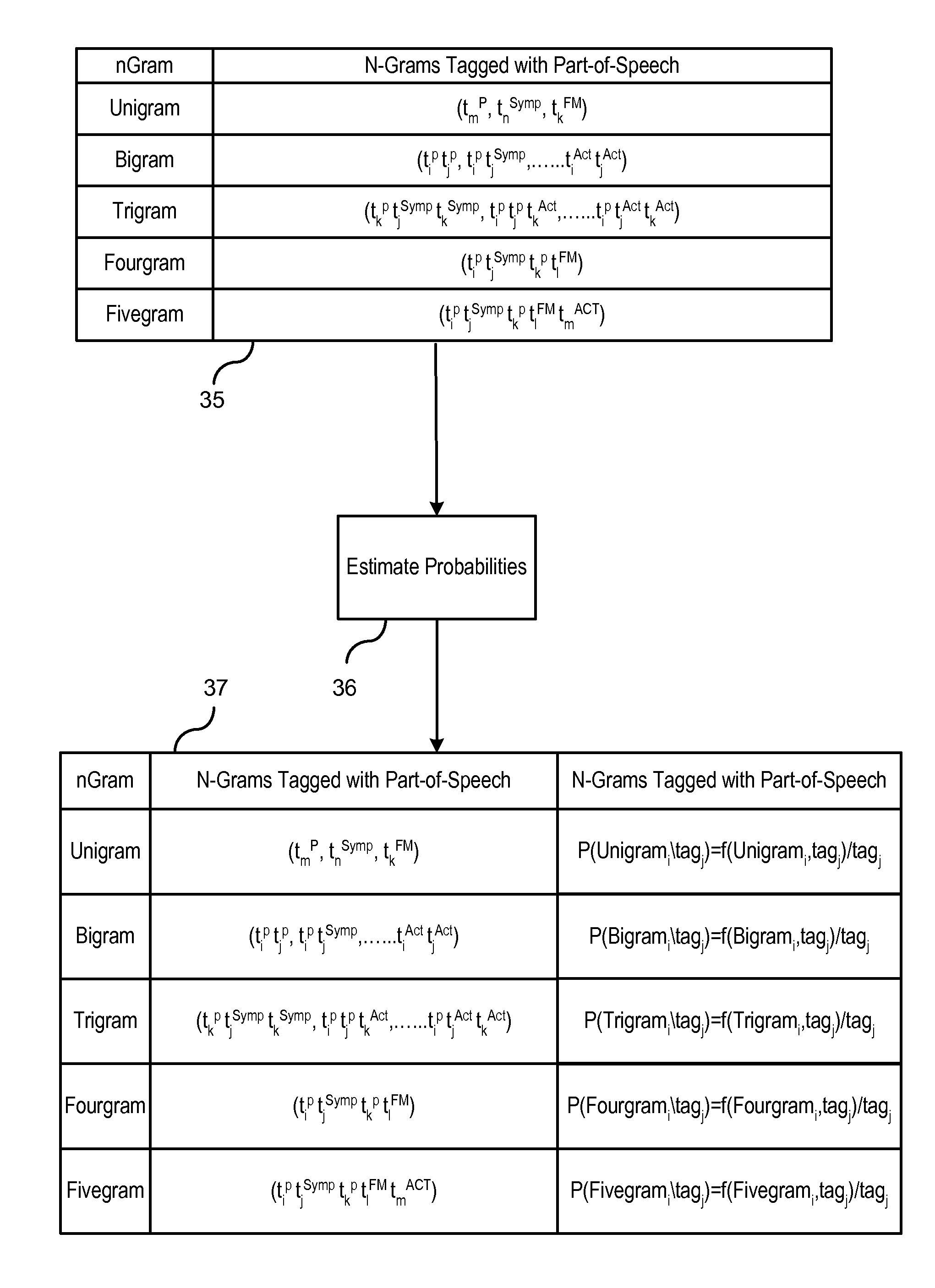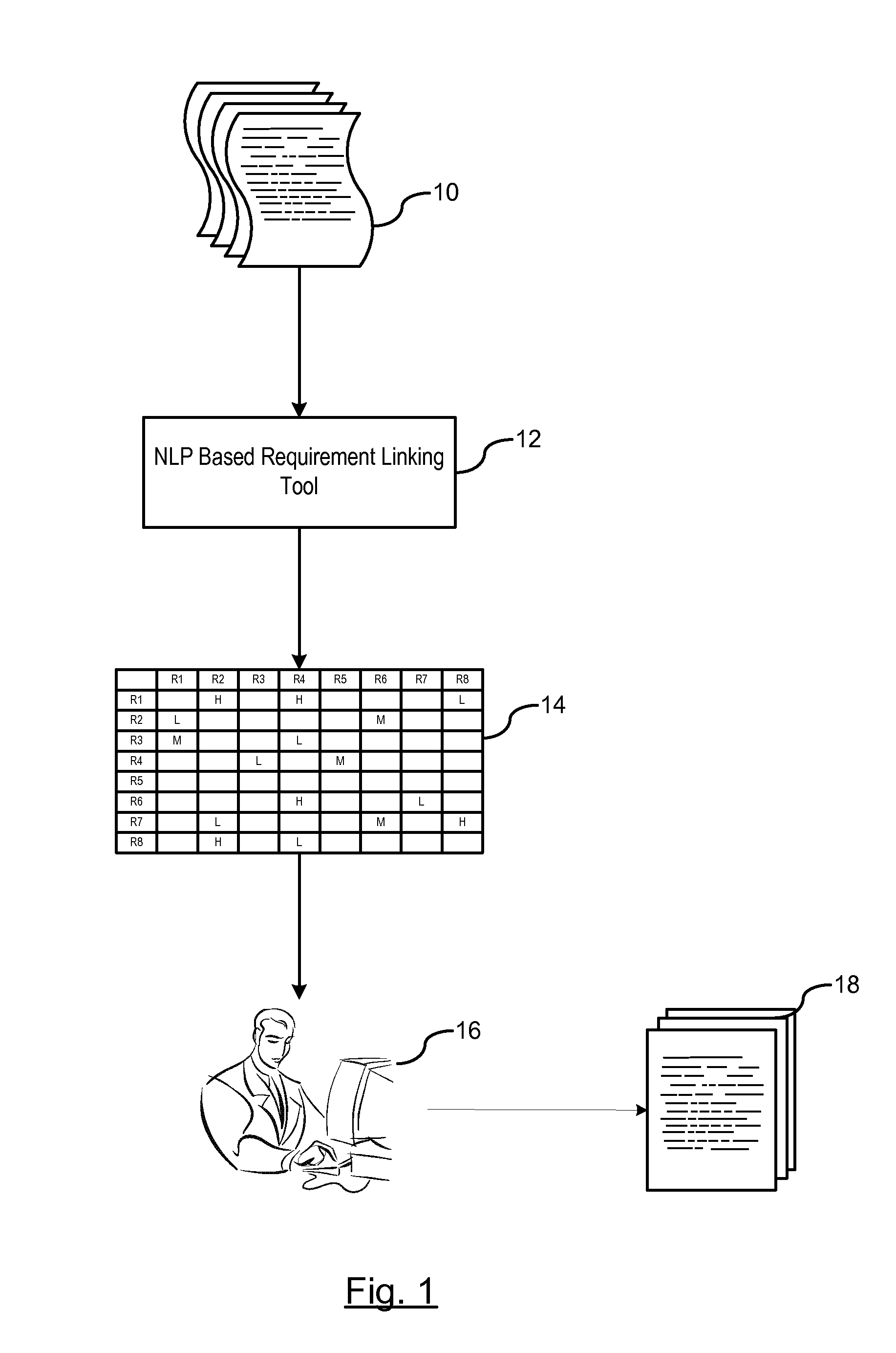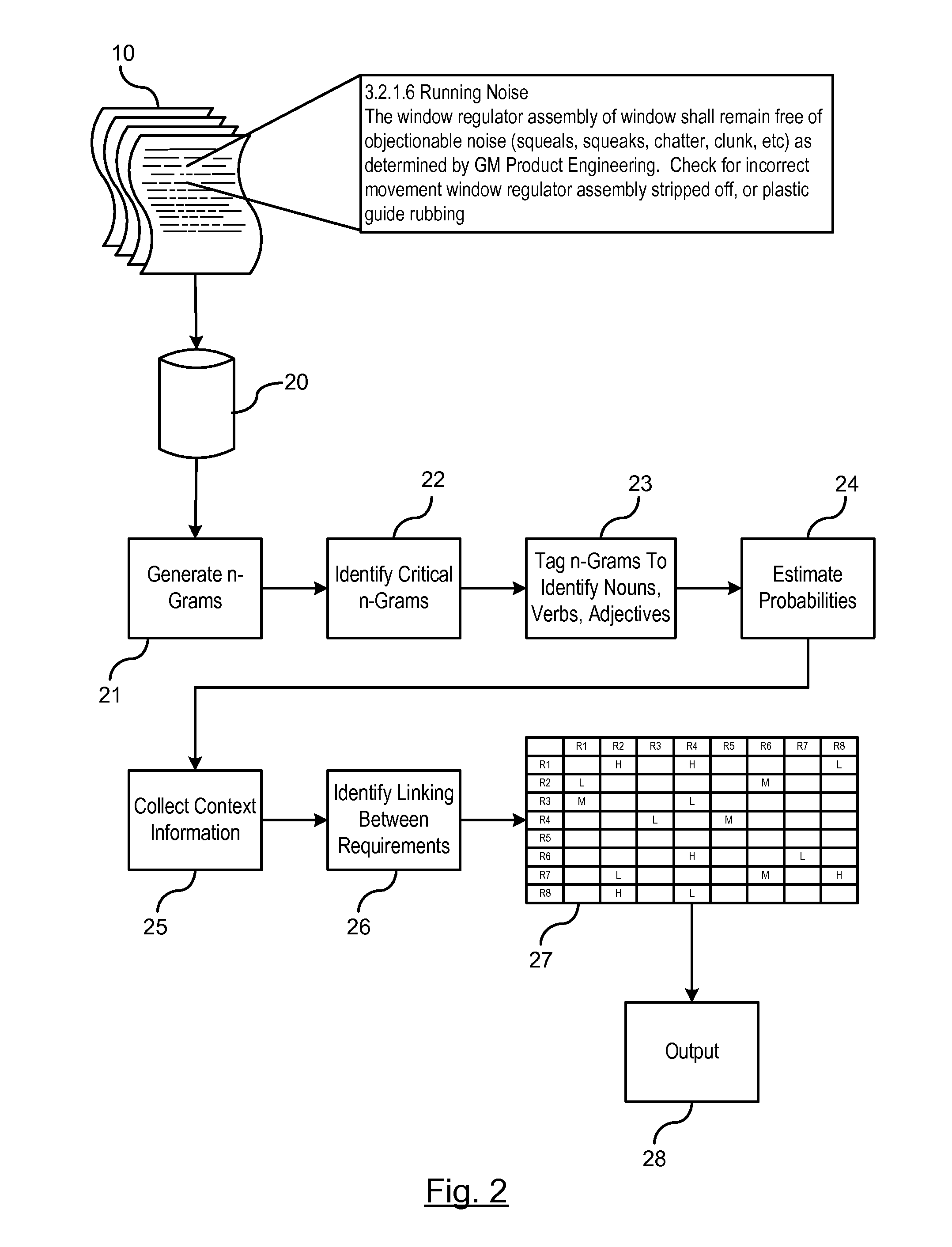Automatic linking of requirements using natural language processing
a technology of automatic linking and requirements, applied in the field of automatic linking of requirements using natural language processing, can solve the problems of increasing the cost of fixing, time-consuming and error-prone exercise of manually linking appropriate requirements in a mental model, and incomplete requirement analysis, so as to achieve effective warranty-based tracking and improve quality.
- Summary
- Abstract
- Description
- Claims
- Application Information
AI Technical Summary
Benefits of technology
Problems solved by technology
Method used
Image
Examples
Embodiment Construction
[0012]FIG. 1 illustrates a block diagram for analyzing implicit associations between requirements. A requirement is a description concerning a part or system or a software that provides details as to the functionality and operation requirements of the part or system or a software. In FIG. 1, requirement documents are shown generally at 10. Requirements are automatically correlated in a requirement matrix whereby requirements are linked by a natural linking processing-based requirement linking tool 12 for identifying a degree of linking relationships between one another. The relationships are illustrated in a requirement matrix 14. The requirement matrix 14 is provided to a peer review such as a domain expert 16. The domain expert 16 analyzes requirement matrix 14 and identifies inconsistency or correctness issues between the various documents / requirements and outputs those results in an analysis report 18, which effectively improves the quality of the requirements document.
[0013]FIG...
PUM
 Login to View More
Login to View More Abstract
Description
Claims
Application Information
 Login to View More
Login to View More - R&D
- Intellectual Property
- Life Sciences
- Materials
- Tech Scout
- Unparalleled Data Quality
- Higher Quality Content
- 60% Fewer Hallucinations
Browse by: Latest US Patents, China's latest patents, Technical Efficacy Thesaurus, Application Domain, Technology Topic, Popular Technical Reports.
© 2025 PatSnap. All rights reserved.Legal|Privacy policy|Modern Slavery Act Transparency Statement|Sitemap|About US| Contact US: help@patsnap.com



